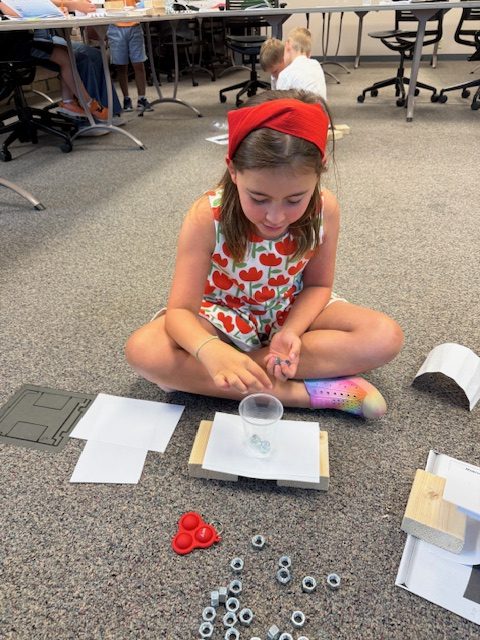We had a wonderful Wednesday today! Our morning meeting started our day by sharing about our pets, and if we did not have a pet, we shared what pet we would want. There are quite a few dogs, cats, and fish in our homes!
Today’s morning discussion jumped off with a review of what we discovered during our testing of a one-story structure and tower structure yesterday. This was a great opportunity for us to reinforce our target vocabulary and tether those with the visual examples of what we saw, and in turn use those great words in our discussion. The forces (push or pull) that were put on each structure tested the structure for its strength and stability and gave us an opportunity to be civil engineers and solve the problem with a working solution. The forces must be equal in strength and coming from opposite directions for our force to be stable. (This is a great point to reinforce in at-home discussions as it is such a great concept to begin imprinting on our engineering minds.) We journaled what direction the force pushed or pulled our structure, the problem that it created, and our civil engineering solution.
Our focus ASK question for today was “How does the structure of a bridge affect its strength, and how can we use different materials in our bridge design?” This central question was what we returned to throughout the day in our discussions and hands-on activities.
Before lunch, we enjoyed reading the book Twenty-One Elephants and Still Standing, which is based on when P.T. Barnum tested the strength of the Brooklyn Bridge with his circus elephants a year after it was built. This book helped to anchor the idea that we have to test a structure for strength and stability so that it is safe for people or cars to cross it. It also reminded us about some of the materials, such as wood, steel, and cable, that are used in bridge building.
Our afternoon was a construction zone of exploration and discovery as we built a beam bridge, a deep beam bridge, and an arch bridge with 4 wooden blocks for our abutments and 4 index cards placed in various locations based on each bridge type. We then tested each bridge using metal nuts and recorded our findings in our journals. Can you guess which bridge was the weakest? That’s right! A beam bridge was what we found to be the weakest of the three.
Every engineer needs a brain break, so we enjoyed a short video on engineers during our afternoon snack and shared all of the discoveries each group made when they built their beam, deep beam, and arch bridges.
All of our discussions and activities are equipping us with the skills and knowledge to plan, design, create, and improve our own bridges starting tomorrow. When thinking like a civil engineer, we use the Engineering Design Process and take our time to follow the steps to be successful and build a safe structure.
Table Talk:
- Why is it important to test a bridge in the center of the span and not on the abutments?
- Tell me the three types of bridges you built today. Which one was the strongest? Which one was the weakest?
- What other materials can be used in building your bridges in class?
Have a wonderful evening!
Warmly,
Mrs. Lett


